Laser Resurfacing For Acne Scars
Leading cosmetic dermatologist and laser specialist Dr Sagoo performs a range of safe and effective laser resurfacing skin treatments, using advanced, specialist procedures to achieve outstanding permanent results.
Laser Resurfacing For Acne Scars Treatments
Choosing the right specialist for your consultation and laser skin treatment is key to getting the best possible results. Also essential for your own peace of mind, Dr. Sagoo is an expert in cosmetic dermatology and cutaneous laser surgery.
He has a wealth of specialist experience and a caseload of more than 30,000 treatments over 20 years. His deep clinical knowledge and experience, combined with state-of-the-art technologies, make him one of the most respected leaders in his field. He is an expert in Laser and Light-Tissue interaction.
As a result, he uses only high-grade surgical lasers in his practice as opposed to low-powered aesthetic devices. The results he achieves are only possible through a combination of class-leading lasers and a highly developed skillset. This is why Dr. Sagoo is the UK leader in cutaneous laser surgery, laser rejuvenation, acne scarring and scar management.
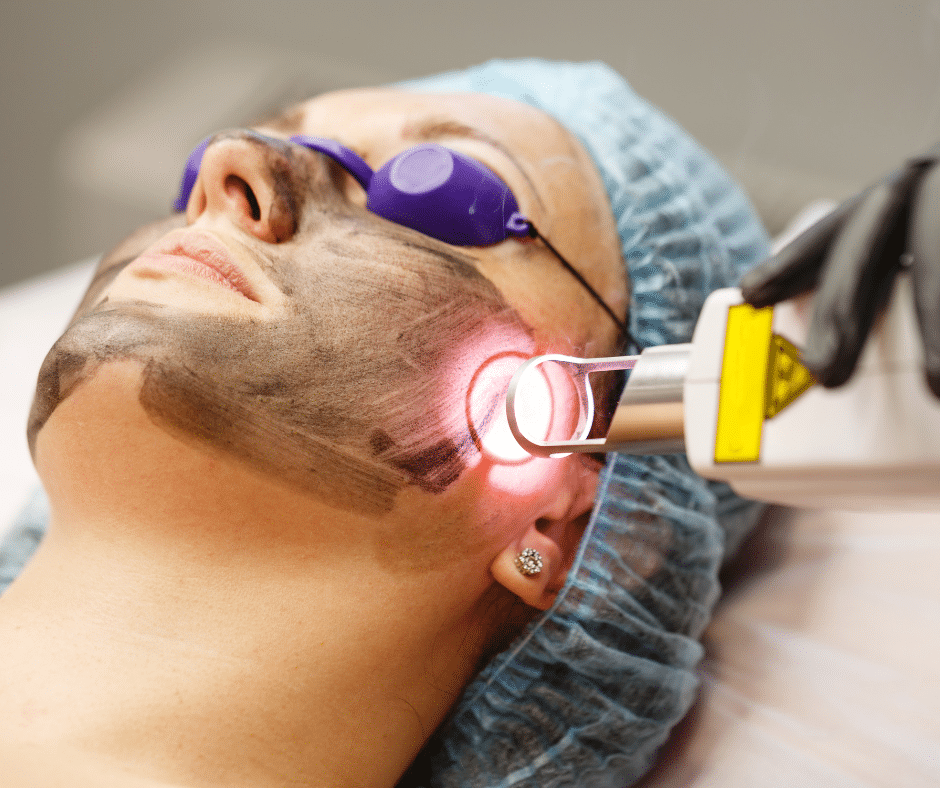
Lasers at Solihull Medical Cosmetic Clinic for Acne Scaring and More!
Dr Sagoo has invested over 500,000 pounds 9 to have the best lasers in the world to provide the best results possible, combined with his 20 years of experience as a cosmetic laser dermatologist. The clinic has more lasers than any cosmetic clinic in the UK to treat a wide variety of cosmetic and skin conditions.
- Pulse dye laser Candela
- Nd yag laser 1064nm Cutera
- Limelight IPL Cutera
- Fractional Co2 laser
- Fully ablative laser Co2 alma
- Excimer laser 308 nm
- Pico laser 1064 and 532 nm
- Radiofrequency micro-needling
- Vascular 1064nm laser
- Dermalux LED light therapy
- Erbium yag fully ablative 2940 nm laser
- Erbium yag 1532 fractional laser
- Pico laser
Laser Resurfacing For Red Acne Scars
In a large number of acne sufferers, repeated acne flare-ups will lead to inflammation and congestion underneath, causing engorged blood vessels and increased blood flow under the scars. This leads to post-inflammatory redness called PIE (post inflammatory redness).
This can be treated by using certain lasers that have a wavelength of energy to target the red blood cells causing the redness. The Solihull Medical Cosmetic clinic has 2 of the most powerful lasers to remove and reduce redness post scarring, namely medical grade Limelight IPL and a pulse Dye laser, which is used to treat red birthmarks and port wine stains.
Depending upon the degree of redness and the depth, Dr. Sagoo will choose the appropriate laser. The lasers are also used for another type of scarring, namely red stretch marks.
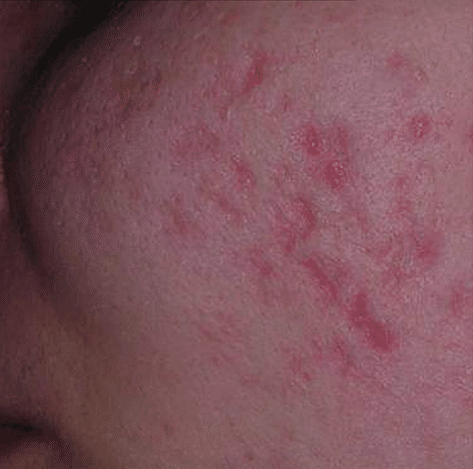
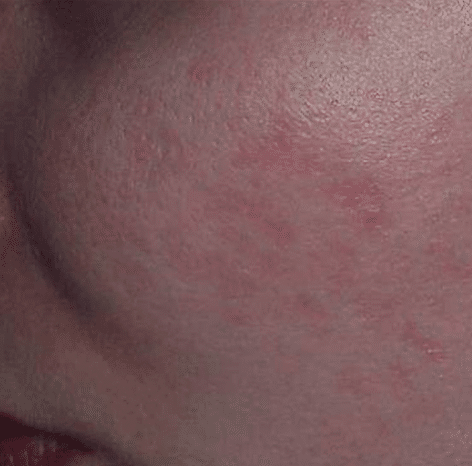
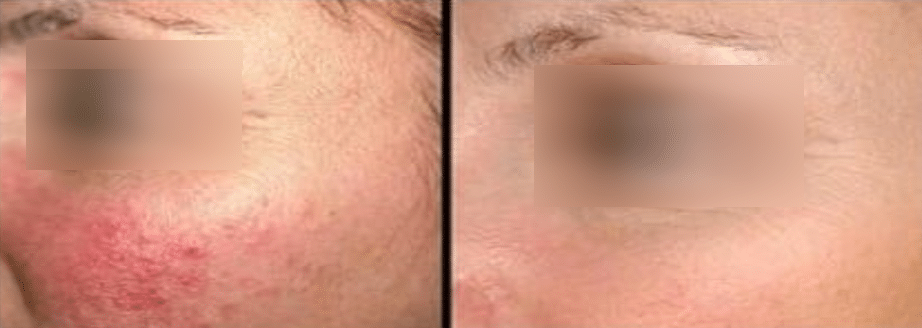
Erbium laser resurfacing
The Solihull Medical Cosmetic Clinic is proud to have the most powerful medical grade fractional and ablative Erbium Yag in the world to achieve optimal results for scarring, called Asclepion Erbium Yag. The Erbium laser is a type of laser used for skin resurfacing. It can be used to treat pigmentation, acne scarring, wrinkles, and imperfections or to improve skin texture.
It evaporates the tissue on the skin's surface to reveal a brand-new skin surface underneath. The Solihull Medical Cosmetic Clinic is one of less than a handful of clinics that have this powerful laser in the UK. Dr Sagoo is a specialist laser doctor experienced in using this laser. This is not comparable to inferior devices in lower-end clinics.
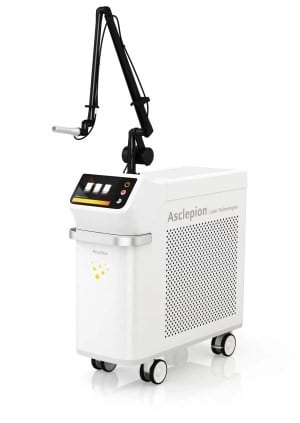
- The erbium laser has a wavelength of 2940nm, which is primarily attracted to the water in the skin.
- It ablates (vaporises) a layer of the skin with each pass, and this helps to resurface skin to reduce wrinkles, acne scarring, and pigmentation, and for the removal of skin lesions.
- The recovery time from erbium laser resurfacing is usually around 1 week.
What Is The Difference Between An Ablative And A Fractional Resurfacing Laser?
A fractional resurfacing laser such as fractional C02 or fractional Erbium imparts columns of laser energy to remove some of the skin but sparing other parts of the skin. Therefore, the downtime is much less for recovery, but more treatment sessions are required. An ablative laser resurfacing removes most of the skin at a deeper level to treat deeper lines and, wrinkles and acne scarring such as ice pick and box type scars.
The downtime is significantly more than fractional, but the results are more impressive and usually only one treatment is required. Ablative laser resurfacing is dependent on the doctor who manually controls the depth of ablation, whereas fractional laser resurfacing follows protocols and suggested treatment parameters and is ideal for skin rejuvenation, tightening pores and pigmentation.
Dr. Sagoo sometimes combines a fractional resurfacing laser with a fully ablative erbium Yag laser, especially when treating scars, to give an overall better outcome. For mild to moderate scarred skin, fractional lasers will give a good improvement in texture without the downtime of fully ablative lasers. For severely scarred skin, fully ablative is preferred.
What is the erbium laser?
The erbium laser emits a wavelength of 2940 nanometres (nm). This laser wavelength is primarily attracted to the water in the skin. This attraction to water causes controlled ablation of a layer of skin. This laser can, therefore, be used to resurface the skin and help to reduce wrinkles, and treat acne scarring, and pigmentation. The laser can also be used to remove various skin lesions (skin lumps and bumps). The erbium Yag laser is also safer on Asian or darker skin than a C02 laser and, does not cause as much deep dermal heating as a C02 laser can, and has minimal downtime. I, therefore, choose Erbium for my Asian skin patients.
In comparison, the carbon dioxide laser is also attracted to the water in the skin, but not as strongly as the erbium laser. Therefore, some of its energy continues to penetrate deeper into the skin's surface, as not all the energy is absorbed immediately in the top layers. This deeper heating of the skin leads to tissue tightening and contraction, something that is not seen with the Erbium laser. When resurfacing skin, often a combination of the two lasers is used to exploit both their properties. The erbium Yag laser can take years of ageing due to the ablation of skin at deeper levels.
What are the main uses of the erbium laser?
As the erbium laser is used to remove (ablate) layers of the skin, it is used primarily to resurface skin for.
-
Wrinkle reduction
It is possible to resurface wrinkles by inducing new collagen and skin regeneration by ablating a layer of skin with each pass of the erbium laser. The greater the number of passes, the deeper the resurfacing of the skin, the longer the recovery period, and the better the results. Recovery from laser skin resurfacing with the Erbium usually takes 1 to 2 weeks.
-
Treatment of acne scarring
The erbium laser can be used in the treatment of atrophic (indented) acne scars. By ablating the superficial layers of the skin, new collagen and skin are regenerated, and the skin tends to return with a more even texture.
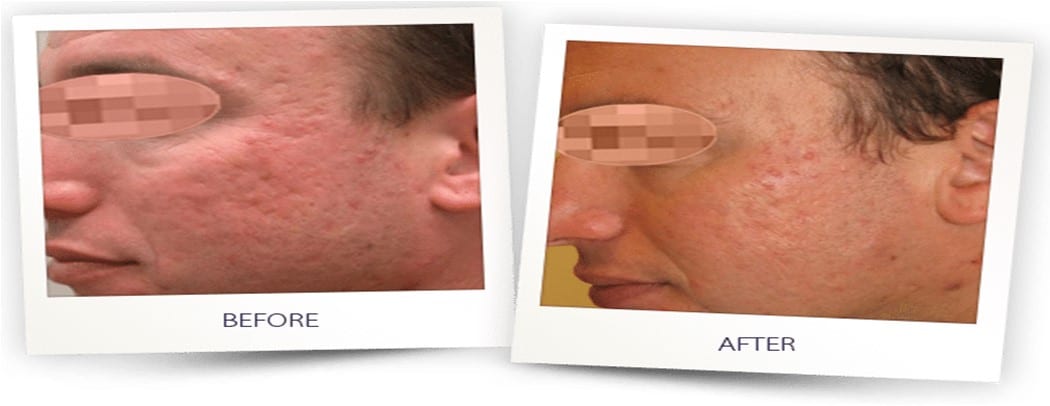
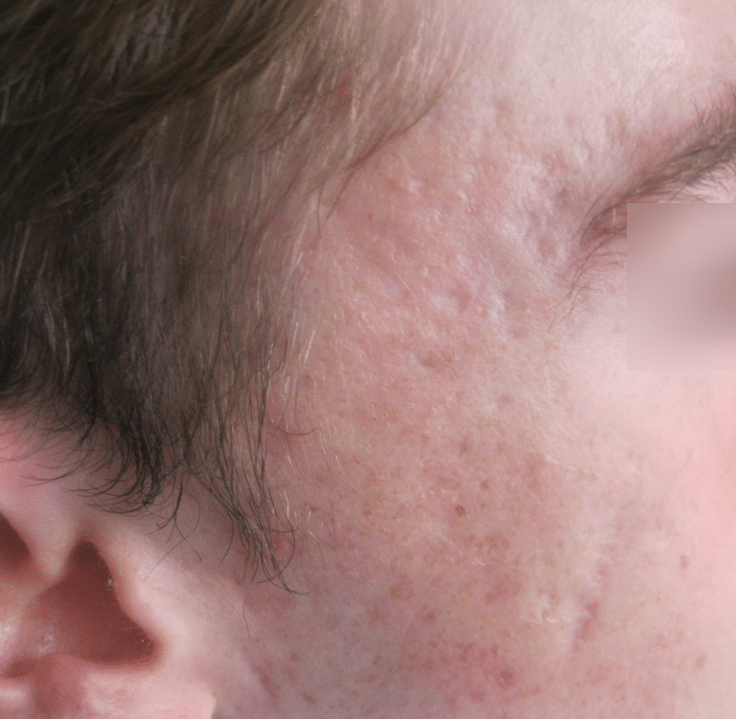
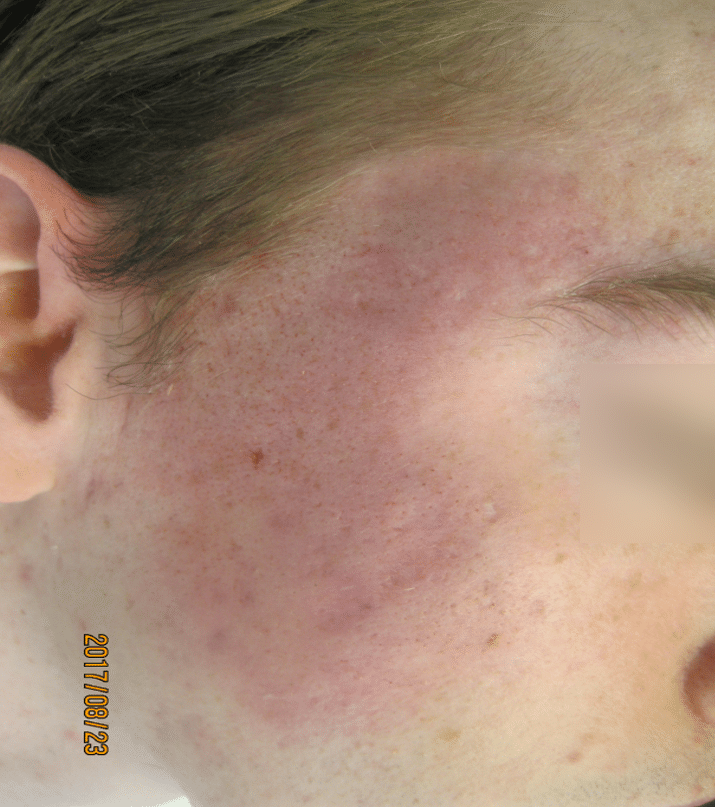
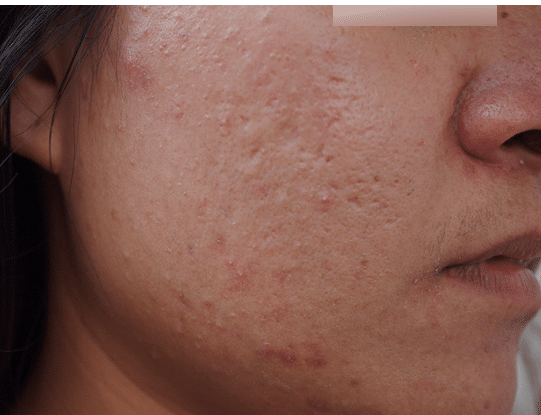
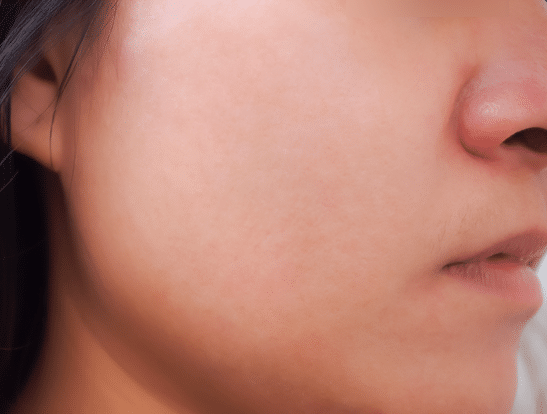
-
Pigmentation
The erbium laser can also be used to treat pigmentation on the skin by removing the top layers of the skin where the pigmentation resides. Pigmentation treatment is not usually performed with the erbium laser unless it is done in conjunction with skin resurfacing for wrinkles.
-
Removal of skin lesions
The erbium laser can be used to remove skin lesions that may be better suited to removal with laser rather than surgical excision. For example, various skin tags, solar keratosis, and benign moles, cysts, syringomas can be treated.
-
Treatment rhinophyma
Rhinophyma is a condition that leads to sebaceous gland enlargement on the nose and a bulbous nose. It is associated with a condition called rosacea. The erbium laser can help to remove these excess tissues on the nose and return it to its normal size and shape
What is involved with Laser Resurfacing For Acne Scars?
A consultation with Dr. Sagoo is the first step to assess if you are a suitable candidate for erbium laser treatment. Depending on the skin type, you may require preparation with certain skin care products, such as topical skin lightening creams, for a month to remove any excessive skin melanin and even out skin thickness to reduce the incidence of possible complications such as post-inflammatory hyperpigmentation or an uneven response to the laser.
During the procedure
The patient will be required to arrive half an hour before the procedure.
The patient will be given either topical and/or local anaesthetic, and the topical anaesthetic will be applied beforehand.
After the procedure
After the treatment, the area will need to be kept clean and dry. An ointment may be administered immediately after the procedure, but other than that, you should not apply anything. You can apply ice or moisturiser 6-8 hours after the procedure.
Your skin may be slightly red and swollen for the first few days after treatment. Try to avoid causing any irritation from clothes or towels as much as possible.
Who is suitable for Erbium laser treatment?
The erbium laser is suited for resurfacing skin on people who have mild to moderate wrinkles, sun damage, or acne scarring. It is best suited to fairer skin types. Those who have darker skin types can have the procedure, although the risk of hyperpigmentation is increased but not as much as with a C02 laser.
The ideal candidate will have moderate to severe wrinkling. They may also have extensive sun damage, sunspots, pigmentation, open pores & scarring. Ablative laser resurfacing is best applied to patients with extensive photodamage.
Can Asian and dark skin types undertake laser resurfacing?
Yes, however, the risk with darker skin types is a condition known as PIH or post-inflammatory hyperpigmentation. This means lasered skin can turn dark. PIH can be reduced by:
- The use of an Erbium laser without CO2
- Conservative fractional CO2 lasers
- The use of sunscreen, hats, & UV avoidance for 6 weeks post-laser
- The use of bleaching creams, & Vitamin A before & after laser
- The passage of time
- Pico lasers can reduce PIH
In some cases of acne scarring, PIH is inevitable as scars lie so deep in the skin. All cases of PIH settle with time and sun protection.
What are the side effects/risks of erbium laser treatments?
The erbium laser, when used for skin resurfacing, usually takes approximately 1 to 2 weeks to recover from. The skin usually appears red and swollen and then crusts over this period. There may be some residual redness that can persist for 1 to 2 months in some cases, depending on the severity of the treatment.
Infection with herpes (the cold sore virus) or bacterial infection is possible after erbium laser resurfacing, and prophylactic medication for these conditions needs to be taken before and after treatment.
There is a small risk of skin pigment changes after erbium laser treatments. Especially if the patient's skin type is olive or darker, the risk of hyperpigmentation (increased skin pigmentation) or hypopigmentation (decreased skin pigmentation) is possible.
Rarely, scarring can occur with erbium laser treatments. This occurs when the depth of the resurfacing/treatment exceeds a level where the skin can regenerate completely.
Acne eruption is possible as a result of any ointments that may be used for healing but should only be temporary.
